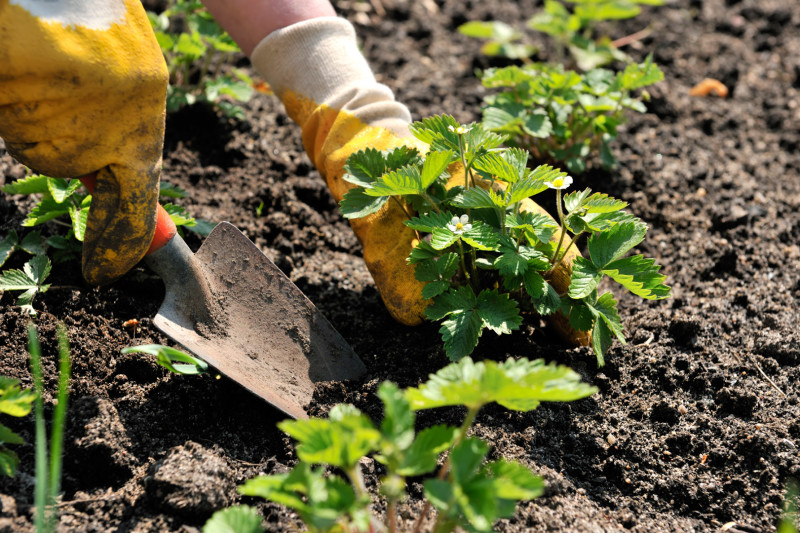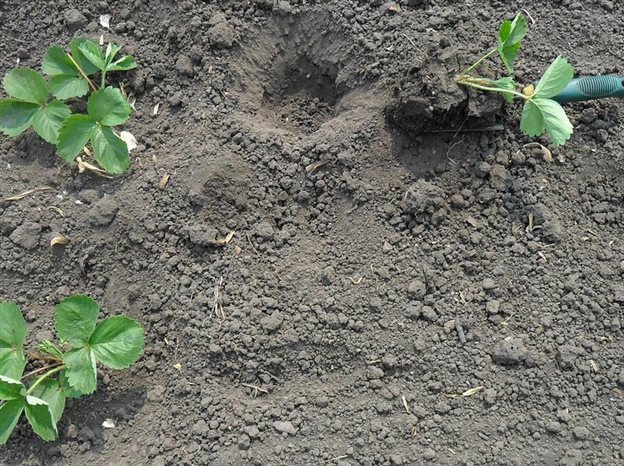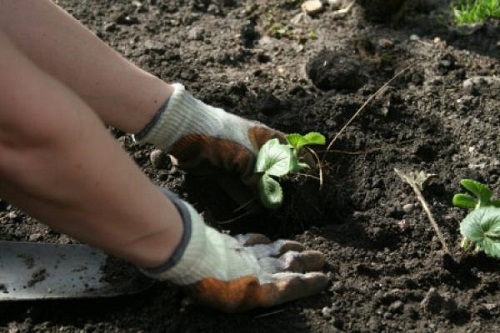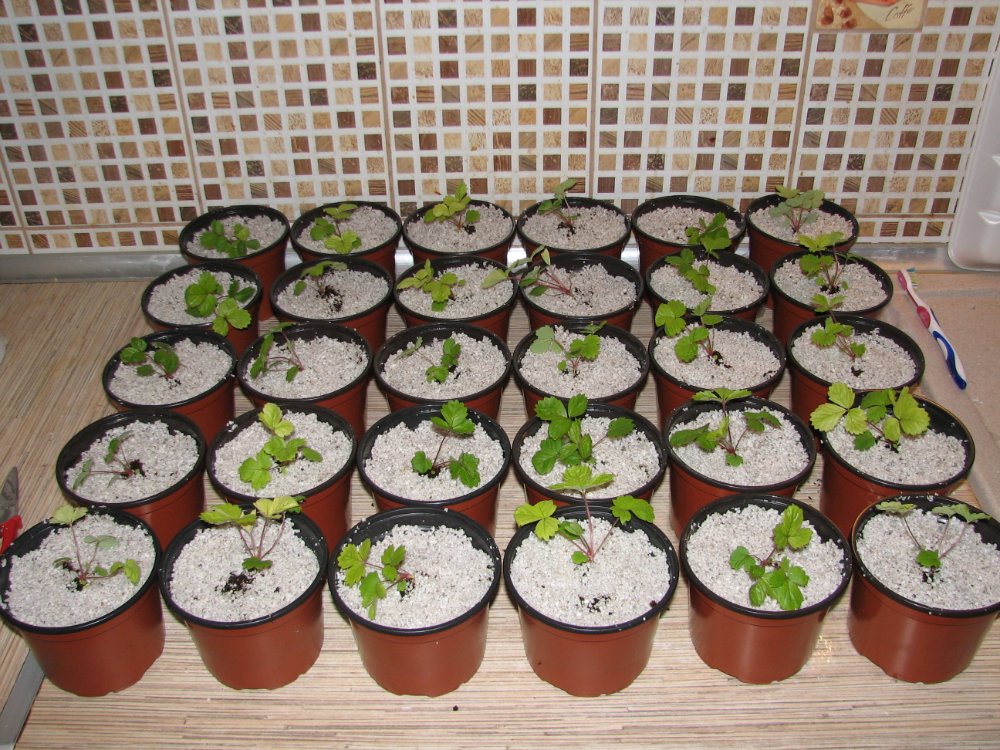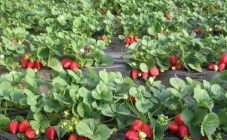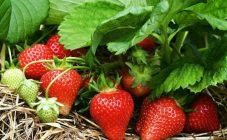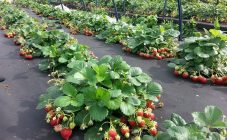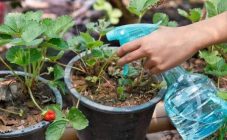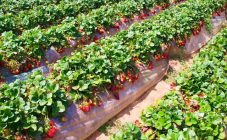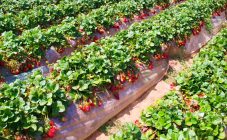Content:
Strawberry is a rather picky plant. It develops freely and bears fruit in almost any conditions. But correctly selected soil for strawberries allows you to create the most comfortable conditions for it, thanks to which it gives tasty and large fruits.
Conditions for growing strawberries
Often, novice gardeners are faced with a number of problems when growing strawberries: sour watery berries of irregular shape, sometimes even rotten or underdeveloped bushes. These troubles should be fought with the help of the correct organization of the growing area.
- It is not recommended to plant the plant on the southern slope (the snow will melt here early and the strawberries will remain absolutely defenseless against frost).
- It is worth choosing a place protected from the wind, but at the same time well lit.
- The bed should be flat, you can make a slight slope to the southwest.
- Every couple of years, it is necessary to transplant the crop to another place, a long stay in the same place can lead to plant diseases.
- Do not overmoisten the soil, but a lack of moisture can lead to irreparable consequences.
- The interval between the bushes should be at least 50 cm. The closer the distance, the smaller the berries.
It is generally accepted that garden strawberries are grown only in the beds. But you can even grow it in your own apartment. In this case, the following conditions must be met:
- If the cultivation is planned from seeds, it is necessary to keep the planting material in the refrigerator, having previously wrapped it in a damp cloth and a plastic bag.
- Prepare a spacious container with a drainage layer for disembarkation.
- The best time for planting strawberry seedlings is autumn (August 15-September 20) or spring (early).
- You should not place the plant on the balcony, as it is afraid of frost and cold.
- It is best to place the plant on the windows located on the south side - they are the most illuminated. Additional light can be arranged, since if it is lacking, the growth of the plant slows down, and the berries become tasteless.
- Organize artificial pollination: direct the fan towards the flowering bush or spend every day on the flowers with a soft brush.
As it turned out, even home conditions are acceptable for growing strawberries with your own hands.
Soil for garden strawberries
Before proceeding with the direct planting, you need to figure out what kind of land strawberries love. To plant a plant in spring, it is worth preparing the composition in the fall.
There are several types of soil that interfere with the normal development of strawberries: clay, sand, lime.
The best soil for a plant, suitable for root development, is sandy loam or loamy. It should be light, air-permeable, and should not accumulate moisture. Additional application of organic fertilizers such as humus, compost or manure will be required. Peat is also important for the development of strawberries.In the fall, it is necessary to fertilize the soil with mineral fertilizers that saturate the nutritional value of the earth: nitrophos, ammophos, diammophos.
Many are interested in the question of what kind of strawberry loves the soil (acidic or alkaline). None of these options work for her. The best option would be neutral, with normal or weak acidity (pH not lower than 5.5).
The composition of any soil can be changed by the introduction of certain fertilizers:
- The loamy soil is ideal for growing strawberries. It includes all the necessary supply of nutrients and minerals and has good breathability. But even such a composition needs annual feeding with organic and mineral compounds.
- Sandy soil does not hold moisture well and is therefore not suitable for strawberries. The porous structure leads to rapid heating and evaporation of moisture. To improve the composition, organic fertilizers will be required even before planting. To saturate with nutrients, mineral dressings will be required. To prevent the accumulated components from washing out, the addition of green manure will be required, as well as the introduction of a small amount of white clay.
- The clay soil is heavy and dense, where the strawberry root system is depleted. To improve the composition, sanding and planting of green manure is necessary. You will need to add supercompost, ash or crushed bricks.
- Lime soil does not retain moisture and nutrients well. After watering or precipitation, a dense crust appears on the soil surface, which reduces air permeability. Improvement will require regular frequent application of mineral and organic fertilizers. It is worth adding loamy soil and potash fertilizers. Mulching is necessary to combat the crust. Calcium cannot be added.
- Sod-podzolic soil has a low humus content, poor mineral composition and high acidity, which adversely affects plants. Also, such soil has an insufficient level of aeration and air permeability. First of all, for such a soil, it is necessary to conduct analyzes to determine the level of acidity. If necessary, it is imperative to reduce this indicator by liming. Apply fertilizers containing nitrogen, potassium and phosphorus.
- Acidic soil must be treated and reduced acidity by liming. You can also add dolomite flour or wood ash.
Correct and timely fertilization can improve the fertility of any soil by 50%.
Preparing the land for planting strawberries
Before preparing the soil for planting strawberries, you need to choose the right place: the occurrence of groundwater is no higher than 1.5 m from ground level. An important condition is the absence of shade from nearby trees.
Soil for strawberries in summer, August, and autumn
August and early autumn are the best times to plant strawberries. Daytime air temperature is already dropping to 20-25˚С, nights are becoming cool, and humidity is in the range of 70-80%.
Summer (late June - early July) is the time for the first soil preparation for strawberries. At this time, you need to dig up the selected piece with a shovel. The digging depth depends on the type of soil:
- for light sandy and sandy loam - 20 cm;
- for carbonate chernozems - 30 cm;
- for heavy compounds - at least 60 cm.
Then the strawberry section is well leveled and fertilizers are applied:
- compost, humus - applied at the rate of 100 m2 1000 kg;
- potash and phosphate fertilizers - per 100 m2 600-1000 kg.
To protect the still unrooted plant from the first frosts, it is worth using a covering material (agrofibre). It is also suitable for protection on treacherous spring nights.
How to prepare the soil for planting strawberries in spring
Fertilizing the soil for garden strawberries in spring affects future fruiting. Thanks to the action of organic and mineral fertilizers, the yield will increase by at least 30%.
Organic fertilizers of a complex type, containing trace elements of nitrogen, potassium and phosphorus, will have the greatest effect. Humus and manure-peat compost are used as organic fertilizers.
Preparing land in the spring for planting strawberries consists of the following steps:
- dig a hole;
- the soil selected from the deepening must be mixed with fertilizers;
- fill the bottom of the pit with sand;
- send the soil mixed with fertilizers back to the pit.
At this time, the following fertilizers can be used for the soil:
- potassium chloride - 15 g per 1 m2;
- superphosphate - 35 g per 1 m2;
- manure (stale) - 1 bucket of manure for 1 bucket of soil;
- ash - for 1 bucket of soil 500 g;
- compost - 1 bucket of compost 1 bucket of soil.
We must not forget about growth stimulants in the spring. The best options are Zircon or Ammofoska.
Peat for strawberries
Peat is an organic type fertilizer that is decomposed animal and plant remains. It contains nitrogen and sulfur, which are beneficial to any crop. For strawberries, this component is only required if grown on sandy and clayey soils.
The use of peat for garden strawberries is possible both in autumn and spring. In its pure form, the product is used only for mulching. First, it must be ventilated and mixed with sawdust. To reduce acidity, add wood ash to the mixture. When adding peat to the soil, you will need to make compost. To do this, it is necessary to make a compost heap, where alternate layers of matter with manure. You can supplement the composition with green mass and kitchen waste. From time to time, the pile should be watered with a superphosphate solution.
You can fertilize strawberries with ready-made peat compost in two ways:
- During planting, put a layer 5 cm high in the prepared holes.
- In the process of soil cultivation, scatter the mixture (per 1 m2 30 kg) and dig up.
Thanks to peat fertilization, the soil structure is significantly improved, the growth of strawberries and the root system is activated, the number of berries increases.
Perlite for strawberries
Perlite is a volcanic rock formed by hydration. To obtain a porous material used in agricultural technology, the rock is heated. Then they are crushed and already used to grow various crops.
The material significantly improves soil structure, retains moisture and prevents crust formation on the soil surface. The use of the additive can be directed to different purposes:
- the coarse fraction is used as drainage;
- covering the topsoil prevents mold;
- storage of bulbs and tubers;
- good material for germinating seeds.
As you know, not only open ground is used for growing strawberries. You can do this in a greenhouse and at home, where a pot is used instead of the usual garden bed. Recently, the Dutch method of growing strawberries has been popular. This method allows you to harvest all year round, does not require special investments and has many more advantages.
For cultivation, polyethylene bags or plastic containers are used, which are filled with perlite mixed with peat. Such a composition absorbs moisture and gives it up only if necessary. The bags are placed on the greenhouse racks at intervals of 50 cm.
In addition, it is good to add perlite to the soil for growing at home. It is also important here to decide what kind of land is needed for strawberries.It is advisable to make the composition yourself, using forest soil, high peat, perlite, humus and fine sand.
Tips and tricks from experienced gardeners
There are few general tips to know how to properly prepare a strawberry bed. It is also worth listening to the opinion of experienced gardeners:
- It is important to analyze the soil from the site to determine the level of its acidity. This will help in the selection of fertilizers that can significantly change the chemical composition of acidic or alkaline soil.
- In the case of shallow groundwater or marshy soil, the gardener must make high beds or hills on which to plant seedlings in the future.
- To successfully fight weeds, it is necessary to treat the soil with herbicides and immediately cover it with a darkened film. It will be possible to open it in a few weeks. During this time, all weed crops will die.
When growing strawberries, not only the composition of the soil plays an important role, but also the climatic conditions. It is necessary to approach the choice of the variety with special responsibility. Certain growing conditions must be suitable for him. Next, you need to choose the right site and strictly follow the landing rules.
